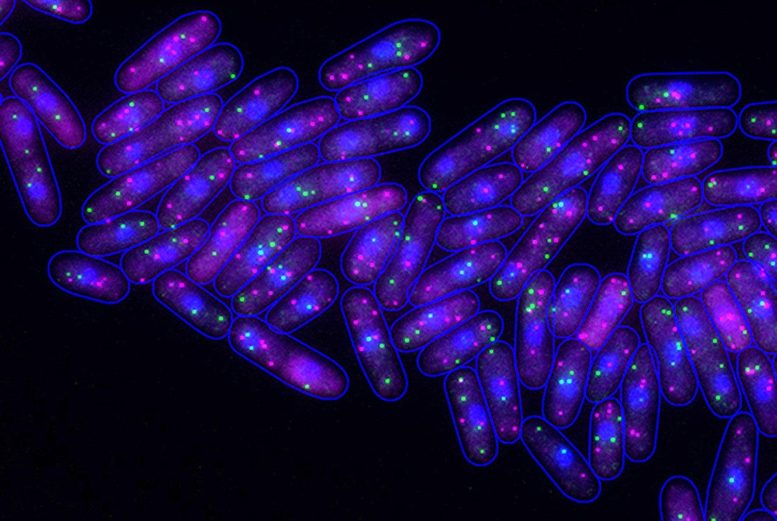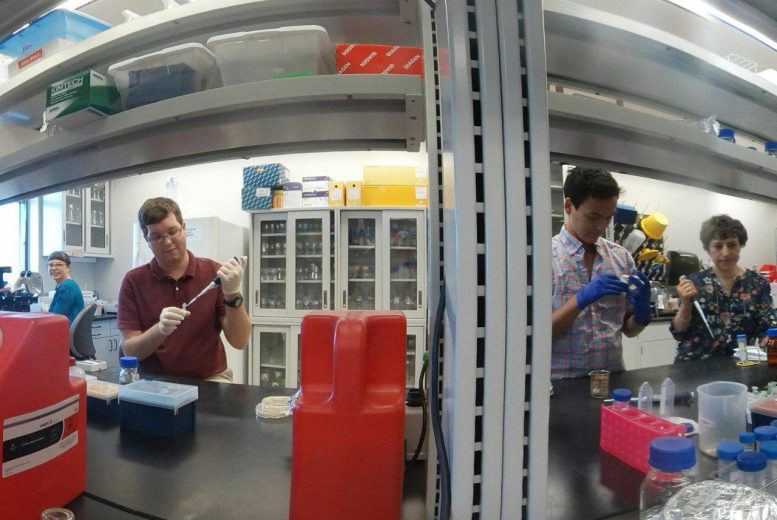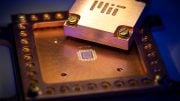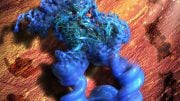
Fission yeast cells with single mRNA molecules of two ultra-low noise genes labeled with fluorophores (green and magenta). The cell nucleus, where RNA is synthesized, and the cell outlines are labeled in blue. Credit: Photo courtesy of Silke Hauf
Silke Hauf and her research team made a surprisingly quiet discovery during their study on cell division. They observed that the expression of RNA in cells is always accompanied by a certain level of variability, or noise, in the amount of RNA produced. Interestingly, Hauf and her team identified multiple genes that exhibited fluctuations in noise that fell below a previously defined limit, referred to as the noise floor, during their expression.
“We have solid data for this phenomenon,” said Hauf, associate professor in the Department of Biological Sciences at Virginia Tech. “There are some genes that are different and can have super low noise.”
Often upstaged by the more striking, well-publicized high-noise genes, Hauf and her team were intrigued by these ultra-low noise genes as they provide a window into the understanding of gene expression and gene expression noise.
This discovery, recently published in the journal Science Advances, includes contributions from co-authors Abhyudai Singh, professor of electrical and computer engineering at the University of Delaware, and Ramon Grima, professor of computational biology at the University of Edinburgh. Both Singh and Grima are also mathematical biologists.

Members of the Virginia Tech Hauf Lab involved in the low-noise gene discovery, from left Silke Hauf, Douglas Weidemann, Eric Esposito, and Tatiana Boluarte. Photo courtesy of Silke Hauf. Members of the Hauf Lab involved in the low-noise gene discovery include (from left) Silke Hauf, Douglas Weidemann, Eric Esposito, and Tatiana Boluarte. Credit: Photo courtesy of Silke Hauf
Cells will be cells
Hauf said the discovery’s importance lies in helping gain a basic understanding of how these cells do what they do. Cells can’t avoid making noise, but for them to function well, the noise needs to be minimized. She compared it with airports attempting to keep their flights on time in order to gain maximum functionality.“So it’s exciting to see that there are genes that operate with a minimum level of noise,” said Hauf. “Imagine there was a flight that always left within five minutes of the scheduled departure time. Wouldn’t you want to know how the airline does it?”
Opens the door to more discoveries
Hauf is excited about understanding how these cells express in such a quiet manner and learning more about the mechanisms behind them. She also would like to find other genes in this category.
“We saw these minimal fluctuations in one particular organism and cell type, but we really need to check other cells to determine if it is universal,” Hauf said.
Reference: “The minimal intrinsic stochasticity of constitutively expressed eukaryotic genes is sub-Poissonian” by Douglas E. Weidemann, James Holehouse, Abhyudai Singh, Ramon Grima and Silke Hauf, 9 August 2023, Science Advances.
DOI: 10.1126/sciadv.adh5138
This research has been funded by grants from the National Institute of General Medical Sciences, a unit within the National Institutes of Health, and Virginia Tech’s College of Science Lay Nam Chang Dean’s Discovery Fund.









Be the first to comment on "Surprising Findings – Scientists Discover Super Low-Noise Genes"